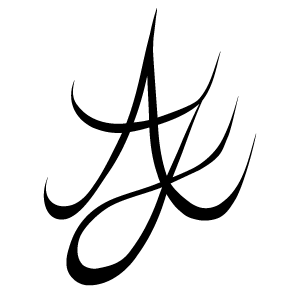

Nicholas Warburg
BRDigung
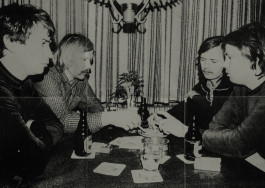
BRDigung
Nicholas Warburg BRDigung
Nicholas Warburg was born in Western Germany after the so-called‚ Wende‘ [turne]. His view of the old Federal Republic is a mediated one - through feature films, documentaries, music and novels, through stories of his relatives and teachers and perhaps above all through a reminiscence, that keeps on shimmering in architecture and everyday life.
The works he shows in his first solo exhibition “BRDigung” are less detailed replicas or arrangements of artefacts than associative expressions of fascination and alienation. Warburg’s approach is often gloomy and amused: we see a portrait of the FDP politician Jürgen Möllemann, who died in a parachute jump in 2003. As a carpet. Strange harmonies occur between the Republic’s past and the shallows of the German present, between the hobby cellar and the Führer bunker, in a large-format wood panelling painted with a delusional mind map of the “BRD-GmbH”. A transparent plexiglas box on a pedestal looks little personal at first glance. However, it contains all the postcards that the artist has received from his parents in the course of his life; many of them with motifs from German holiday resorts. (When this work is purchased, the collector will receives all the future postcards mailed to Warburg by his parents on an ongoing basis.) On a two-metre-high canvas, written in rough brushstrokes in the style of the Neue Wilden, one reads: “SCHLEEF/ BRINKMANN/ FASSBINDER/ KIPPENBERGER/ ALLES NAZIS”. What at first seems crude is not only a deliberate play of syllables, which works in the opposite direction to the well-known slogan of Rittersport, a popular German chocolate brandfrom the 70s (“Square - practical - good”).
Above all, it is an ambivalent confrontation with four artist figures from a generation born around the end of the war who are still present today. Warburg is visibly influenced by these positions and at the same time distances himself from them. Einar Schleef, Rolf Dieter Brinkmann, Rainer Werner Fassbinder and Martin Kippenberger were pioneers in their respective disciplines (theatre, literature, film and visual arts). They were publicly accused of being left-wing, anarchistic enfants terribles, but they have all nonetheless earned a reputation as authoritarian characters with misogynistic traits.Indeed, each of them was sooner or later confronted with accusations of fascism. Nicholas Warburg’s works are a loosely composed retrospective accompanied by a beautiful shiver. They point towards a recent history and draw delicate lines to a contemporary Germany. They know what lies beneath the earth, where we reach for the clouds if we can’t get our feet on the ground.
Text by Thomas Dierkes
Nicholas Warburg (*1992, Frankfurt am Main) studied art at the California Institute of the Arts in Santa Clarita and currently at the Städelschule in Frankfurt am Main. He is co-founder of the collective Frankfurter Hauptschule, which has attracted attention with spectacular interventions in public space since 2013. His works, which often play with the perception of the beholder, have been awarded the Prize of Künstlerhilfe Frankfurt, a scholarship from the Polytechnische Gesellschaft and the main prize of the Kaspar König Postcard Competition of the Städelschule.
Single Works
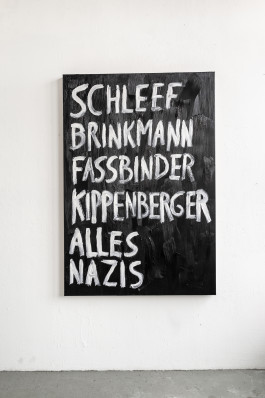
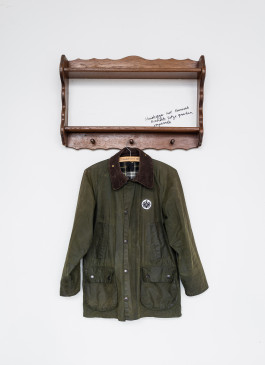
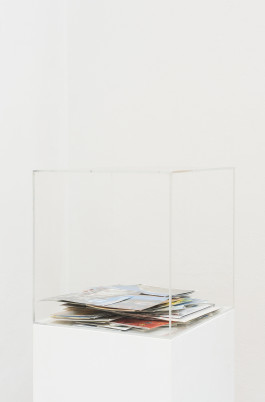
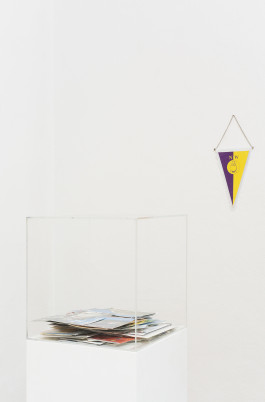
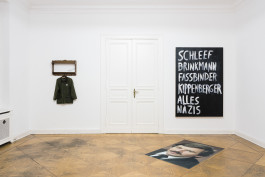
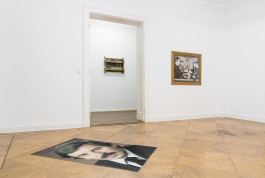
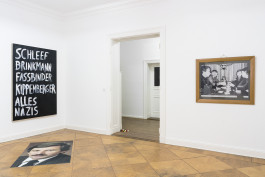
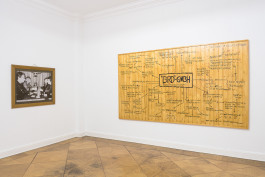
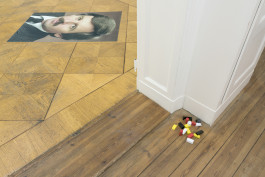
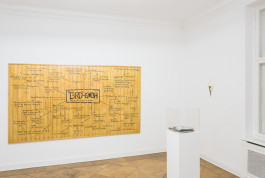
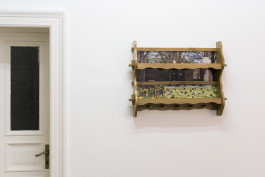
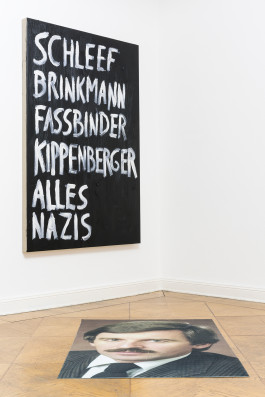
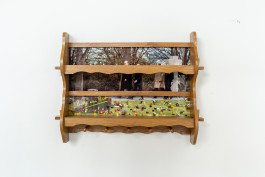
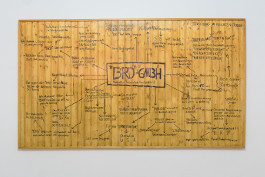
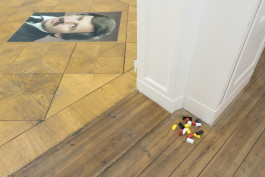
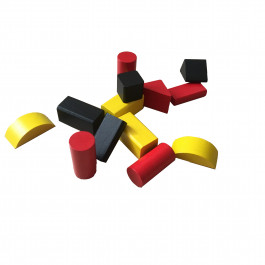
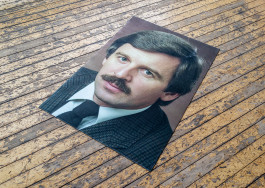
Nicholas Warburg
BRDigung

BRDigung
Nicholas Warburg BRDigung
Nicholas Warburg was born in Western Germany after the so-called‚ Wende‘ [turne]. His view of the old Federal Republic is a mediated one - through feature films, documentaries, music and novels, through stories of his relatives and teachers and perhaps above all through a reminiscence, that keeps on shimmering in architecture and everyday life.
The works he shows in his first solo exhibition “BRDigung” are less detailed replicas or arrangements of artefacts than associative expressions of fascination and alienation. Warburg’s approach is often gloomy and amused: we see a portrait of the FDP politician Jürgen Möllemann, who died in a parachute jump in 2003. As a carpet. Strange harmonies occur between the Republic’s past and the shallows of the German present, between the hobby cellar and the Führer bunker, in a large-format wood panelling painted with a delusional mind map of the “BRD-GmbH”. A transparent plexiglas box on a pedestal looks little personal at first glance. However, it contains all the postcards that the artist has received from his parents in the course of his life; many of them with motifs from German holiday resorts. (When this work is purchased, the collector will receives all the future postcards mailed to Warburg by his parents on an ongoing basis.) On a two-metre-high canvas, written in rough brushstrokes in the style of the Neue Wilden, one reads: “SCHLEEF/ BRINKMANN/ FASSBINDER/ KIPPENBERGER/ ALLES NAZIS”. What at first seems crude is not only a deliberate play of syllables, which works in the opposite direction to the well-known slogan of Rittersport, a popular German chocolate brandfrom the 70s (“Square - practical - good”).
Above all, it is an ambivalent confrontation with four artist figures from a generation born around the end of the war who are still present today. Warburg is visibly influenced by these positions and at the same time distances himself from them. Einar Schleef, Rolf Dieter Brinkmann, Rainer Werner Fassbinder and Martin Kippenberger were pioneers in their respective disciplines (theatre, literature, film and visual arts). They were publicly accused of being left-wing, anarchistic enfants terribles, but they have all nonetheless earned a reputation as authoritarian characters with misogynistic traits.Indeed, each of them was sooner or later confronted with accusations of fascism. Nicholas Warburg’s works are a loosely composed retrospective accompanied by a beautiful shiver. They point towards a recent history and draw delicate lines to a contemporary Germany. They know what lies beneath the earth, where we reach for the clouds if we can’t get our feet on the ground.
Text by Thomas Dierkes
Nicholas Warburg (*1992, Frankfurt am Main) studied art at the California Institute of the Arts in Santa Clarita and currently at the Städelschule in Frankfurt am Main. He is co-founder of the collective Frankfurter Hauptschule, which has attracted attention with spectacular interventions in public space since 2013. His works, which often play with the perception of the beholder, have been awarded the Prize of Künstlerhilfe Frankfurt, a scholarship from the Polytechnische Gesellschaft and the main prize of the Kaspar König Postcard Competition of the Städelschule.
Single Works

















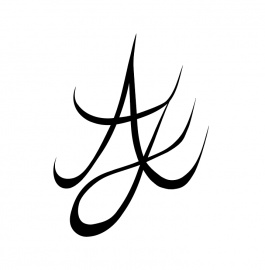
Anton Janizewski Galerie,